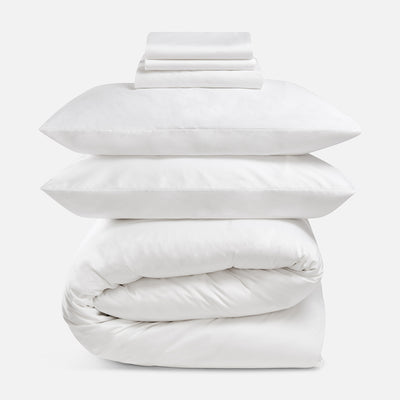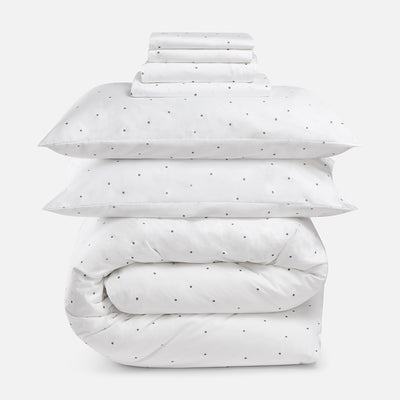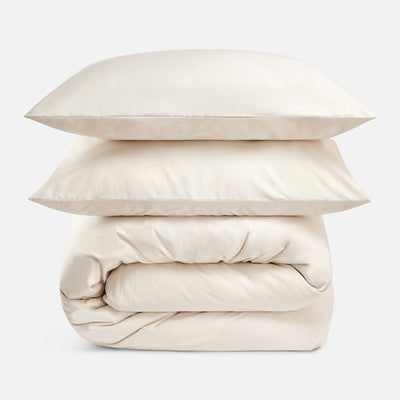
How Long Should Bedding Last?
How long should bedding actually last?
- “Definitely no more than 2 years”
- “Anywhere between 10 and 12 years”
- “Somewhere ranging from 3 to 5 years”
These are just a handful of the countless suggestions you get when searching for the answer to this question online. It’s no wonder so many of us are confused about how long our bed linen should last.
So let’s if we can’t clear the matter up a little!
There are two factors which influence how long bed linen should last:
- The quality of the bed linen
- How well it’s looked after.
1. Quality
It’s always wise to be mindful of the type of fabric you choose when buying new bed linen. With so many options available out there it can be very confusing to try to work out which material will be the most long-lasting. As well deciding on the type of fabric, another factor to take into consideration when trying to work out how long your bedding should last is the thread-count. The thread count of a piece of material is the number of threads woven together per square inch. In this section, we discuss various types of materials and thread counts and how long each are expected to last.
Fabric
The most popular fabric used in bed sheets is cotton along with cotton blends such as poly-cotton and rayon. 100% cotton bedding has been widely agreed upon as being the best quality material for bed linen. The long fibres found in long-staple cotton help to reduce pilling (knobbly balls of fluff sticking to your sheets). This means that cotton bedding often lasts up to twice as long as other bedding made from man-made fabrics. Bed linen made from 100% cotton can last a very long time, with some retailers even offering lifetime warranties on their 100% cotton products.
Blends of cotton combined with other materials, such as poly-cotton are widely available and tend to be much cheaper than pure cotton linen. However, these blends are often not breathable and therefore do not help us to regulate our body temperature whilst we sleep. As a result, we are more likely to produce more sweat during the night and then have to wash our bedding more frequently, which can reduce the lifespan of the quality of bed linen. These blends usually last for a fair few years, with the table below showing the average number of wash cycles expected of each product type.
|
Bed sheet |
120 washes |
|
Duvet cover |
90 washes |
|
Pillow case |
70 washes |
Other less popular fabrics used for bed linen include silk, linen and satin, however these tend to have a much shorter lifespan than cotton rich materials as they can be less durable and sometimes rather difficult to maintain.
Thread count
When buying bedding, you’ll notice a huge variation of thread counts available. Typically, standard bed linen contains around 180 threads per inch, with more luxurious linen containing over 300 and the highest quality bed linen having up to 1000. However, fabric made up of an extremely high thread count often means that the threads are much finer, making them less durable as they’re more prone to damage. A good balance would be a thread count of around 500, providing you with high quality yet still retaining durability.
2. Care
No matter what type of material your bedding is made from, the only way you can help it to last longer is by taking good care of it. Always consult the manufacturers guide on the label of your bed linen and ensure that you follow their instructions in order to help your bedding to last longer.
For an in-depth guide with tips on how to make your bed linen last longer and stay soft, see our recent blog post on ‘How to Wash Cotton Bedding to Keep it Soft’.
The average person tends to spend approximately one third of their life-time sleeping. That’s why we believe that it’s so important to invest in high quality bedding and taking good care of it. We hope this guide has helped you to find out how long your bedding should last, and given you some pointers as to how to make it last even longer.










